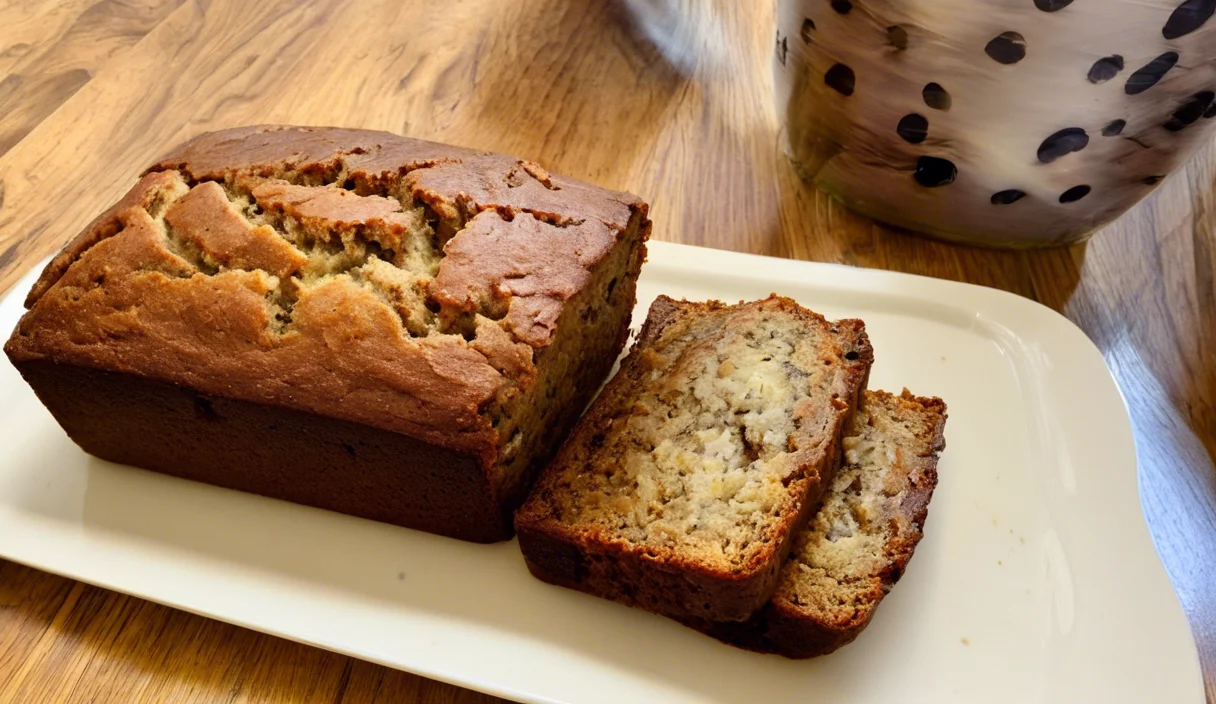Sourdough bagels are quickly becoming a staple in home baking, with roots that trace back through the rich history of bagels, for those who love the tangy, chewy texture that only sourdough can provide. Whether you’re a seasoned baker or a beginner looking to try something new, making sourdough bagels at home is a rewarding experience that’s worth the effort. This comprehensive guide will walk you through everything you need to know about sourdough bagels, from understanding the fermentation process to mastering the art of shaping and baking. By the end of this article, you’ll be ready to bake your own batch of delicious, homemade sourdough bagels.
The Basics of Sourdough Bagels
What Are Sourdough Bagels?
At their core, sourdough bagels are a type of bagel made using a sourdough starter instead of commercial yeast. This starter, which is a mixture of flour and water fermented with wild yeast and bacteria, gives sourdough bagels their distinctive tangy flavor and chewy texture. Unlike regular bagels, which often rely on yeast for a quicker rise, sourdough bagels require a longer fermentation process. This not only enhances the flavor but also improves the overall digestibility of the bagel.
Why Choose Sourdough Bagels Over Yeasted Bagels?
Sourdough bagels offer a depth of flavor that yeasted bagels simply can’t match. The natural fermentation process in sourdough bagels creates complex flavors and a chewy texture that is both satisfying and unique. Additionally, sourdough bagels tend to have a lower glycemic index than their yeasted counterparts, making them a healthier choice for those monitoring their blood sugar levels. The prolonged fermentation also breaks down gluten more effectively, which can make sourdough bagels easier to digest.
Ingredients Needed for the Recipe
Essential Ingredients
To make sourdough bagels, you’ll need a few basic ingredients:
- Sourdough Starter: The heart of sourdough bagels, providing the natural leavening.
- Bread Flour: High-gluten flour is crucial for the chewy texture of bagels.
- Water: Helps activate the starter and hydrate the dough.
- Sugar: A small amount of sugar aids in fermentation and gives a slight sweetness to the dough.
- Salt: Enhances the flavor and strengthens the gluten network.
Optional Toppings
While plain sourdough bagels are delicious on their own, adding toppings can take them to the next level. Some popular options include:
- Everything Bagel Spice: A mix of sesame seeds, poppy seeds, garlic, onion, and salt.
- Sesame Seeds: For a nutty flavor and a bit of crunch.
- Poppy Seeds: Classic topping for a traditional bagel flavor.
- Sunflower Seeds: Adds a hearty, nutty flavor.
- Cinnamon and Raisins: For a sweet, dessert-like bagel.
The Role of High-Gluten Flour and Low Hydration Dough
The secret to the perfect sourdough bagels lies in the flour and dough consistency. High-gluten bread flour is essential because it provides the strength needed for the dough to hold its shape during the boiling and baking process. The low hydration dough, which means less water in the dough, creates a stiffer consistency that is easier to shape and results in a tighter, chewy crumb—exactly what you want in a bagel.
Preparing Your Recipe
How to Create a Bubbly, Active Sourdough Starter
A successful batch of sourdough bagels begins with a well-maintained sourdough starter. If you don’t have a starter already, you can create one by mixing equal parts of flour and water and allowing it to ferment at room temperature. Over a few days, the mixture will begin to bubble as the wild yeast and bacteria become active. Regular feedings—adding more flour and water—will keep your starter strong and ready for baking.
Maintaining Your Sourdough Culture for Consistent Results
Consistency is key when it comes to sourdough bagels. To ensure your starter remains active, you’ll need to feed it regularly, especially if you bake frequently. Store your starter in the refrigerator if you’re not using it daily, and feed it once a week to keep it healthy. Before using it in your bagel recipe, take it out of the fridge and feed it a few times to reactivate it. When your starter is bubbly and has doubled in size within a few hours of feeding, it’s ready to use.
Using Sourdough Discard in Other Recipes
One of the great things about maintaining a sourdough starter is that you’ll often have leftover “discard” after feedings. Don’t throw away your sourdough discard! You can use it in various delicious recipes like these Sourdough Discard Recipes for pancakes, waffles, and more. Incorporating sourdough discard into your cooking and baking can add a subtle tang and improve the texture of many dishes.
Step-by-Step Guide to Making Sourdough Bagels
Mixing the Dough for Sourdough Bagels
Start by mixing your sourdough starter with warm water and sugar in a large mixing bowl. Gradually add the bread flour and salt, stirring until the dough comes together. The dough will be stiff and slightly dry, which is typical for bagel dough. This low hydration dough is what gives sourdough bagels their characteristic chewiness. Knead the dough by hand or with a stand mixer fitted with a dough hook until it’s smooth and elastic.
Bulk Fermentation: Developing Flavor in Your Bagels
After the dough is mixed, it’s time for the first rise, known as bulk fermentation. Cover the bowl with plastic wrap or a damp kitchen towel and let the dough ferment at room temperature for 8-12 hours, or until it has doubled in size. This slow fermentation process is crucial for developing the complex flavors in sourdough bagels. The longer the fermentation, the tangier the flavor.
Shaping and Pre-Shaping the Dough for Perfect Bagels
Once the dough has risen, it’s time to shape your bagels. Begin by dividing the dough into equal portions, about 100-120 grams each, depending on the size you prefer. Roll each portion into a ball and let them rest for about 10-15 minutes. This resting period allows the gluten to relax, making the dough easier to shape. After resting, poke a hole in the center of each ball and gently stretch it to form a bagel shape. Place the shaped bagels on a parchment-lined baking sheet and cover them with a damp towel to prevent drying out.
The Boiling Process: The Key to Authentic Sourdough Bagels
Understanding the importance of brining can also enhance your culinary skills. Learn more about it with this guide on What is the Simple Brine Formula.
Why Boil Bagels? The Science Behind the Technique
Boiling is what sets bagels apart from other bread. Boiling the bagels before baking gelatinizes the starches on the surface, creating a barrier that keeps the interior dense and chewy while the exterior becomes crisp and golden. This step is crucial for achieving the classic texture of sourdough bagels. The longer you boil the bagels, the denser and chewier they will be. For a thinner, crispier crust, boil them for about 30 seconds on each side; for a thicker crust, boil for up to 2 minutes.
Honey Water Bath: Enhancing Flavor and Crust
Traditionally, bagels are boiled in water with honey, which adds a subtle sweetness and enhances the golden color of the crust.
Achieving a Golden Brown Crust Through Proper Boiling
For the perfect golden-brown crust, ensure your water is at a rolling boil before adding the bagels. Use a slotted spoon to gently lower the bagels into the water, being careful not to overcrowd the pot. Boil a few bagels at a time, flipping them halfway through to ensure even cooking. After boiling, place the bagels back on the parchment-lined baking sheet, and if desired, immediately dip the tops into your chosen toppings while they are still wet.
Baking Sourdough Bagels to Perfection
Preparing the Oven: Steam Baking and Oven Spring
To bake your sourdough bagels to perfection, preheat your oven to 425°F (220°C). For an extra-crispy crust, consider adding steam to your oven. This can be done by placing a pan of water on the bottom rack or spraying the oven walls with water just before baking. The steam helps the bagels expand fully (a process known as oven spring) before the crust sets, resulting in a lighter, airier texture.
Baking on a Sheet Pan vs. a Pizza Stone
When it comes to baking sourdough bagels, you can use either a sheet pan or a pizza stone. A sheet pan is more convenient and works well, but a pizza stone can give you a slightly better crust due to its ability to retain and evenly distribute heat. If using a pizza stone, make sure it’s preheated in the oven before placing the bagels on it. Whichever method you choose, bake the bagels for about 20-25 minutes, or until they are golden brown and feel light when picked up.
Cooling and Storing: How to Keep Your Bagels Fresh
After baking, transfer the bagels to a wire rack to cool slightly. While it might be tempting to dive right in, letting them cool for at least 10 minutes allows the interior to set properly. Sourdough bagels are best enjoyed fresh, but they can be stored in an airtight container at room temperature for up to two days. For longer storage, consider freezing them. Simply slice the bagels in half, wrap them tightly in plastic wrap, and freeze them. To reheat, pop them in the toaster or a low oven until warmed through.
Flavor and Texture of Sourdough Bagels
The Chewy Texture and Crispy Crust of Sourdough Bagels
One of the most distinctive features of sourdough bagels is their texture—a perfect balance of chewiness on the inside and crispiness on the outside. This texture comes from the combination of high-gluten flour, low hydration dough, and the boiling process, which together create the ideal bagel bite. Whether you enjoy your sourdough bagels plain or topped with your favorite spreads, the texture is sure to satisfy.
Comparing the Tangy Flavor of Sourdough to Traditional Bagels
The flavor of sourdough bagels is another key difference from traditional yeasted bagels. The natural fermentation process of the sourdough starter imparts a tangy, slightly sour flavor that complements both sweet and savory toppings. This tanginess can be adjusted by varying the fermentation time—longer fermentation results in a more pronounced sour flavor, while shorter fermentation yields a milder taste.
Customizing Your Bagels: From Plain to Cinnamon Raisin
Sourdough bagels are incredibly versatile and can be customized to suit your taste. While plain sourdough bagels are a classic, you can easily add flavorings and toppings to create a variety of bagels. For a sweet treat, try adding cinnamon and raisins to the dough before shaping. If you enjoy sourdough-based sweet treats, you might also like this Sourdough Cinnamon Rolls Recipe. If you prefer something savory, everything bagel spice is a popular choice. You can also experiment with other toppings like sesame seeds, poppy seeds, or even coarse sea salt.
Types of Sourdough Bagels
Classic Variations: Everything, Sesame, and Poppy Seed Bagels
Classic bagel flavors like everything, sesame, and poppy seed are perfect for sourdough bagels. These toppings add a layer of texture and flavor that complements the tangy dough. To make everything bagels, mix together sesame seeds, poppy seeds, dried garlic, dried onion, and salt, then press the mixture onto the tops of the bagels after boiling. For sesame or poppy seed bagels, simply press the seeds onto the tops of the bagels while they are still wet from boiling.
Specialty Bagels: Vegan, Whole Wheat, and Gluten-Free Options
If you have dietary restrictions, you can still enjoy sourdough bagels by making a few adjustments to the recipe. For vegan sourdough bagels, use plant-based milk instead of water and ensure your toppings are free from animal products. Whole wheat sourdough bagels are another option—simply replace some or all of the bread flour with whole wheat flour. If you’re gluten-intolerant, consider experimenting with gluten-free sourdough recipes, though these may require additional ingredients like xanthan gum to achieve the right texture.
Regional Differences: NYC Bagels vs. Montreal Bagels
New York City bagels and Montreal bagels are two regional variations that have gained popularity worldwide. NYC bagels are known for their larger size, softer texture, and wider variety of flavors. Montreal bagels, on the other hand, are smaller, denser, and sweeter, often boiled in honey water and baked in a wood-fired oven. While sourdough bagels are more akin to NYC bagels in texture, you can adapt the recipe to mimic the characteristics of either style by adjusting the boiling time, dough composition, and baking method.
Unique Characteristics of Sourdough Bagels
Discover the Unique Flavor and Texture of Sourdough Bagels: A Tangy, Chewy Delight
Sourdough bagels stand out for their unique flavor and texture. The natural fermentation process gives them a distinct tangy taste, and their chewy interior with a crisp crust makes them a favorite among bagel lovers. Whether enjoyed plain or with your favorite toppings, sourdough bagels offer a satisfying and flavorful experience.
Comparing Sourdough Bagels to Regular Bagels in Terms of Health
When comparing sourdough bagels to regular yeasted bagels, there are several factors to consider. The fermentation process in sourdough bagels not only enhances the flavor but also improves their nutritional profile. Sourdough bagels are often lower in sugar and may contain higher levels of certain nutrients, such as B vitamins, iron, and magnesium. Additionally, the probiotics produced during fermentation can contribute to gut health, although most are lost during baking. Overall, sourdough bagels are a more nutrient-dense option than regular bagels.
The Impact of Fermented Dough on Digestibility
Fermented dough is easier to digest because the fermentation process breaks down complex carbohydrates and gluten into simpler forms. This can be particularly beneficial for people with gluten sensitivities or those who experience bloating after eating bread. Sourdough fermentation also produces lactic acid, which lowers the pH of the dough and helps preserve it naturally, reducing the need for preservatives. While sourdough bagels still contain gluten, the fermentation process makes them easier on the digestive system compared to non-fermented breads.
Serving Suggestions
For a hearty meal, consider pairing your bagels with a robust dish like a steak. Try this Tomahawk Steak Recipe for an indulgent dinner.
Traditional Toppings: Cream Cheese, Avocado, and More
Sourdough bagels pair perfectly with a variety of traditional toppings. Cream cheese is a classic choice, offering a creamy contrast to the chewy texture of the bagel. Avocado is another favorite, especially when paired with fresh herbs, a sprinkle of salt, and a squeeze of lemon. For a sweeter option, try spreading butter or cream cheese on a plain or cinnamon raisin bagel and topping it with honey or jam.
For a delightful contrast, try pairing your sourdough bagels with a sweet treat like homemade ice cream. Check out this recipe for Creamsicle Ice Cream Ingredients for a refreshing dessert option.
Creative Bagel Sandwich Ideas for Breakfast and Lunch
Sourdough bagels make an excellent base for sandwiches, whether you’re looking for a hearty breakfast or a satisfying lunch. For breakfast, try an egg and cheese bagel sandwich with avocado and hot sauce. For lunch, a turkey and cheese bagel with lettuce, tomato, and mustard is a filling and delicious option. Vegetarian options like hummus, cucumber, and sprouts also pair well with the tangy flavor of sourdough bagels.
Bagels for Brunch: Pairing with Fresh Juices and Coffee
Sourdough bagels are a great addition to any brunch spread. Serve them alongside fresh fruit, yogurt, and a selection of spreads like flavored cream cheeses or butter. Pair your sourdough bagels with freshly squeezed orange juice or a cup of strong coffee for a classic brunch experience. The versatility of sourdough bagels means they can be enjoyed in both sweet and savory combinations, making them a perfect choice for any occasion.
Storing and Freezing Sourdough Bagels
Best Practices for Storing Bagels at Room Temperature
If you plan to eat your sourdough bagels within a couple of days, storing them at room temperature is perfectly fine. Place the bagels in a paper bag, which will help them retain their crisp crust while preventing them from getting too soft. For longer storage, transfer the bagels to an airtight container or plastic bag, but keep in mind that this may soften the crust slightly.
How to Freeze Bagels Without Losing Quality
To extend the shelf life of your sourdough bagels, consider freezing them. Start by slicing the bagels in half—this makes it easier to toast them straight from the freezer. Wrap each half in plastic wrap, then place them in a resealable freezer bag. This double layer of protection helps prevent freezer burn and keeps your bagels fresh for up to three months. When you’re ready to eat, simply pop the frozen bagel halves into the toaster or a preheated oven until warmed through.
Reheating Frozen Bagels: Toaster vs. Oven
Reheating frozen sourdough bagels is quick and easy. If you prefer a crispier bagel, the toaster is the way to go—just toast the frozen halves until they’re golden brown. If you have a few bagels to reheat, or if you want to warm them without toasting, use the oven. Preheat the oven to 350°F (175°C) and place the frozen bagels directly on the oven rack. Bake for about 10-15 minutes, or until the bagels are heated through and slightly crispy on the outside.
Troubleshooting Common Issues
Why Are My Bagels Too Dense? Adjusting Hydration Levels
One common issue when making sourdough bagels is ending up with a dense texture. This often happens if the dough is too dry or not kneaded enough. To avoid this, make sure you’re using the correct amount of water in your dough. The dough should be stiff but not overly dry. Kneading the dough thoroughly also helps develop the gluten, which gives the bagels their chewy texture. If your bagels still turn out too dense, try extending the fermentation time to allow more gas to build up in the dough.
Fixing Bagels That Don’t Rise: Understanding Fermentation
If your sourdough bagels aren’t rising as expected, the issue likely lies with the fermentation process. Ensure your sourdough starter is active and bubbly before using it. If the dough doesn’t double in size during the bulk fermentation, it might need more time or a warmer environment. Another tip is to make sure the dough isn’t too cold during the final rise—if the dough is too cold, it may not rise properly. To fix this, try placing the dough in a slightly warmer spot or extending the proofing time.
Getting the Perfect Crust: Tips for Boiling and Baking
Achieving the perfect crust on your sourdough bagels can be tricky, but a few tips can help. Make sure the water is at a rolling boil before adding the bagels, and don’t skip the honey or barley malt syrup, which adds color and flavor to the crust. After boiling, bake the bagels in a preheated oven at a high temperature (425°F or 220°C) to ensure they develop a crispy, golden-brown exterior. If the crust is too soft, try boiling the bagels a bit longer or baking them for an extra few minutes.
Conclusion
Making sourdough bagels at home is a rewarding experience that lets you enjoy fresh, flavorful bagels with a unique, tangy taste. From understanding the basics of fermentation to mastering the art of shaping, boiling, and baking, this guide has covered everything you need to know. Whether you enjoy them plain or topped with seeds, sweet or savory, these bagels are a versatile and delicious addition to any meal. So why not give it a try and bake your own batch? You might just discover a new favorite recipe.
FAQs
What makes sourdough bagels special?
Sourdough bagels are special because of their unique flavor profile and texture. The slow fermentation process not only enhances the taste but also gives the bagels a chewy texture with a slightly crisp crust. This traditional method of making bagels results in a product that is rich in flavor and perfect for any time of day.
What is the difference between sourdough and regular bagels?
The main difference lies in the leavening process. Sourdough bagels use a natural starter that ferments the dough, creating a tangy flavor and chewy texture, while regular bagels typically use commercial yeast, resulting in a milder taste and quicker rise.
What Makes Sourdough Bread So Flavorful and Versatile?
Sourdough bread is often appreciated for its unique flavor and texture. The fermentation process gives it a distinct tangy taste and a satisfying chew, making it a favorite for those who enjoy artisanal breads. Its versatility allows it to be used in a variety of dishes, from sandwiches to toasts, enhancing any meal with its rich and complex flavor profile.
What Makes Sourdough Bagels Perfect for Different Tastes?
Sourdough bagels can be enjoyed by anyone who appreciates a good bagel with a unique flavor. Whether you prefer a simple plain bagel or something more adventurous like an everything bagel, sourdough provides a versatile base that can be customized to your liking. Enjoy them fresh out of the oven or toasted with your favorite spreads and toppings.





